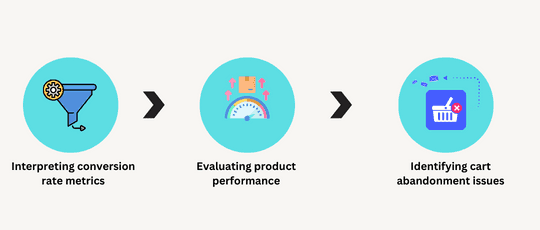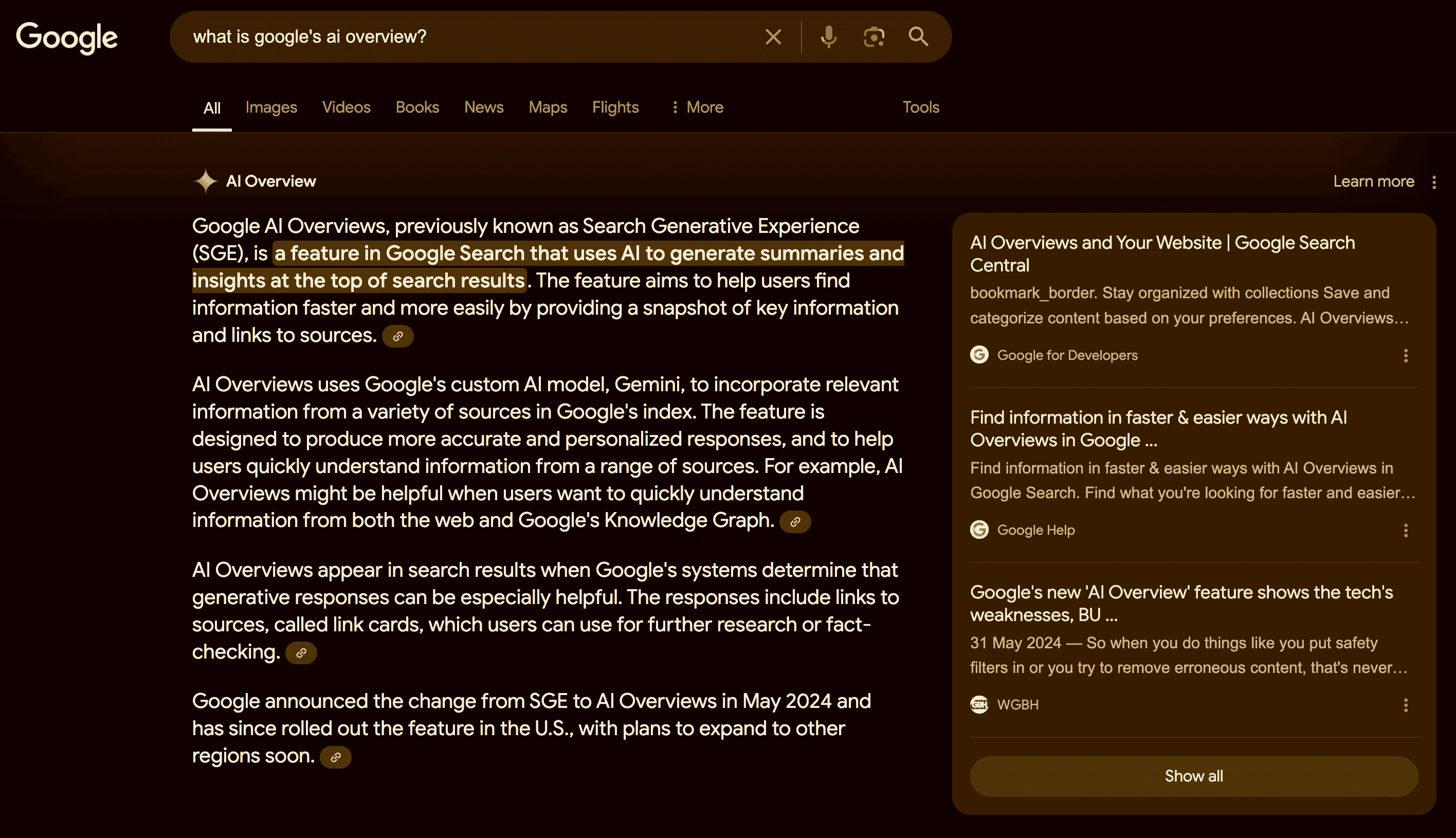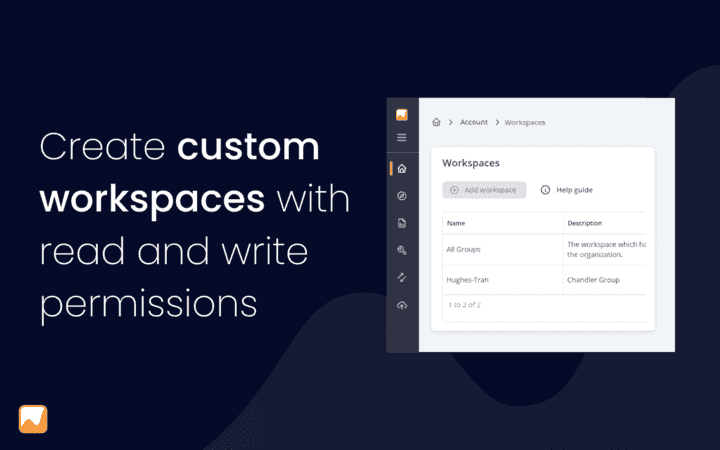WooCommerce Analytics: Boost Sales with Data Mastery
Last updated on Thursday, October 26, 2023
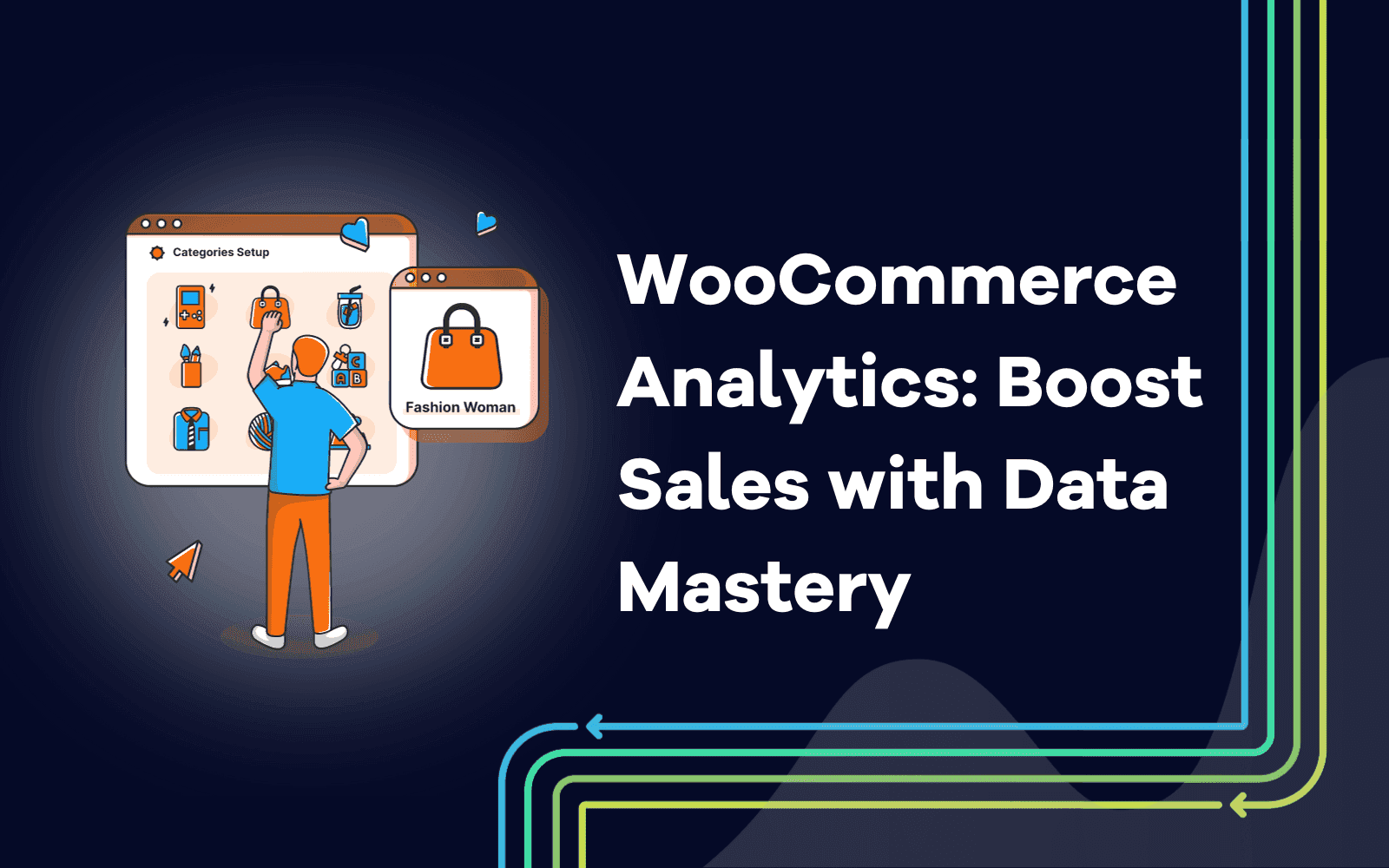
Data is the digital economy's cornerstone, particularly regarding analytical and eCommerce reports. This translates to a wealth of job opportunities for professionals in the business realm. HubSpot, an invaluable platform, aptly aids in deciphering this treasure trove of data." - Clive Humby.
For those operating WooCommerce-powered eCommerce websites on WordPress, the truth is clearly prevailing in eCommerce demands more than mere storefront setup. The journey entails dissecting eCommerce reports and refining your website to charm more visitors and boost sales. In reality, tending to an eCommerce site can easily be a full-time occupation.
Unveiling analytics is paramount in comprehending your clientele, tracing their actions, and steering decisions with data at the helm. Armed with analytic reports and an overarching dashboard, you access precious insights into customer behavior, honing your business strategies. Harness the potential of your WooCommerce analytics dashboard to remain in the loop and steer informed verdicts for your enterprise. This is where WooCommerce analytics comes to the fore.
The dashboard's eCommerce reports encompass historical data. Through conducting analytics on your WooCommerce-based eCommerce portal using its analytics dashboard, critical metrics such as sales, traffic origins, conversion rates, and customer demographics are scrutinized. This, in turn, lays bare invaluable insights about your audience, furnishing the foundation for savvy business determinations rooted in analytics reports.
Let's plunge right in!
Benefits of Using Analytics for WooCommerce
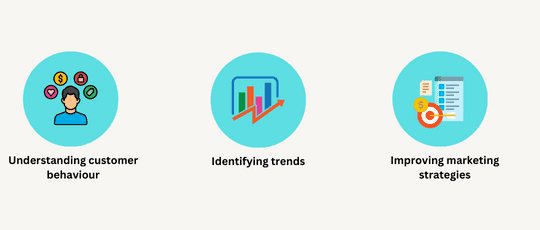
Understanding customer behaviour and preferences
The WooCommerce Analytics plugin offers valuable insights into customer behavior and preferences. This tool empowers businesses to make informed decisions by providing easy access to essential data through a user-friendly admin dashboard. Companies gain deep insights into their target audience by analyzing data from website traffic, purchase history, and customer demographics. These insights are presented in clear visualizations on the dashboard. The plugin also supports importing data from various sources for comprehensive analysis.
This historical data is invaluable for recognizing patterns in customer behavior on your WooCommerce site. By studying dashboard reports, businesses can identify popular products and appealing features. This data-driven approach enables the customization of offerings to match customer needs better. For instance, if analytics reveal frequent views but low purchases in a specific product category, it suggests room for improvement in product details or pricing. Such insights empower admins to make strategic adjustments.
If you want to enhance your marketing efforts, considering a WooCommerce Marketing Guide can help you get maximum output. This guide covers strategies to drive traffic, boost conversions, and create a strong online presence for your WooCommerce store.
Moreover, analytics can uncover valuable information about customer preferences. By tracking historical data and generating reports using a plugin, businesses can determine which products or features resonate with their customers within a specific date range. Additionally, metrics like average order value and time spent on different website pages provide valuable insights. Armed with this knowledge, they can focus on optimizing those aspects using a plugin to generate reports on historical data within a specific date range, enhancing the overall shopping experience.
Identifying trends and opportunities for product optimization
The Analytics plugin allows businesses to generate reports and analyze emerging trends within their WooCommerce store. The reports can be filtered by date range, allowing businesses to gain valuable insights into their store's performance. By monitoring sales data using reports and analyzing the plugin, companies can identify patterns or sudden spikes in demand for certain products or categories within a specific date range. By doing so, businesses can capitalize on these trends by adjusting inventory levels accordingly or launching targeted marketing campaigns.
For instance, if analytics reports reveal an increasing demand for eco-friendly products among customers within a specific date range, a business could respond by sourcing more sustainable options to meet this growing trend using a plugin. This proactive approach, powered by a plugin, ensures that companies stay ahead of the competition and effectively cater to evolving consumer demands. By generating regular reports, companies can analyze up-to-date data and make informed decisions based on the latest information.
The Analytics plugin provides insights into areas where product optimization is needed, including data analysis. By analyzing cart abandonment or page bounce rate metrics, businesses can identify potential pain points in the purchasing journey using a plugin that tracks and analyses data. This information can help companies understand the reasons behind cart abandonment or high bounce rates and take appropriate actions to address them. With this information, they can make necessary improvements to streamline the date process and reduce barriers preventing customers from completing their purchases.
Improving marketing strategies based on data insights
Analytics plays a vital role in enhancing marketing strategies for WooCommerce stores, ensuring they remain aligned with current trends and consumer preferences. Through the examination of data concerning customer acquisition, conversion rates, campaign effectiveness, and timing, businesses can gain invaluable insights into the efficiency of their marketing endeavors.
For instance, analytics unveil the most productive marketing channels or campaigns regarding conversions and customer engagement. This data empowers businesses to make well-informed choices about their marketing tactics and allocate resources efficiently. By analyzing timing patterns, companies can optimize their initiatives to effectively reach their intended audience and maximize their returns on investment. Armed with these insights, businesses can prudently allocate their marketing budget by focusing on channels that yield optimal outcomes for their intended audience and timing.
Furthermore, analytics assist in quantifying the return on investment (ROI) for various marketing activities, including continually assessing campaign performance to identify the most effective and timely strategies. By monitoring metrics like acquisition costs and customer lifetime value, businesses can assess the profitability of diverse campaigns and adapt their strategy accordingly. This evaluation is indispensable for businesses to stay updated with their marketing endeavors and make enlightened decisions.
Importance of WooCommerce Analytics for SEO
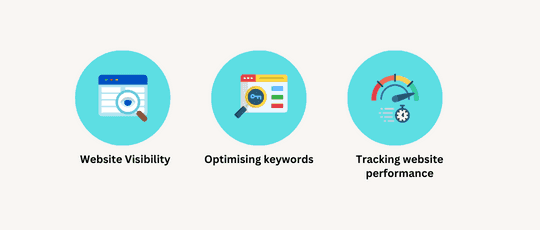
Enhancing website visibility in search engine results
Utilizing WooCommerce analytics is essential for bolstering your website's search engine visibility. You can unearth invaluable insights into visitor behavior and stay attuned to their preferences by meticulously tracking and evaluating crucial data like timestamps. With this knowledge, you can make well-informed decisions to refine your content and enhance your SEO strategy, ultimately leading to better performance.
WooCommerce analytics proves its efficacy in boosting visibility through its capacity to furnish comprehensive keyword performance data, including timestamps. This diligent monitoring of keyword-driven traffic enables you to spot optimization opportunities, refining content for improved search engine rankings and heightened prominence. In the dynamic online arena, maintaining an up-to-date record of keyword performance is pivotal for maintaining an edge. For instance, detecting underperforming product pages prompts adjustments in keyword targeting, lifting their visibility in search outcomes.
The advantages of WooCommerce analytics extend to encompass monitoring user engagement metrics, like bounce rates and time-on-page. These metrics serve as windows into user interaction, spotlighting areas ripe for enhancement. If, for instance, analysis indicates swift departures from a specific page without meaningful actions, it serves as a pointer for optimizing content or design.
Optimising keywords and content based on user intent
Understanding user intent is essential for effective SEO, and WooCommerce analytics provides valuable data to optimize keywords and content accordingly. By analyzing the search queries that lead users to your site, you can gain insights into what they are looking for and tailor your content to meet their needs.
For example, if many visitors find your site by searching for "best running shoes," it indicates that they intend to purchase such products. Armed with this knowledge from WooCommerce analytics, you can create targeted landing pages optimized for relevant keywords like "top-rated running shoes" or "affordable athletic footwear." This approach aligns with user intent and increases the likelihood of attracting qualified traffic.
To learn more about crafting an effective SEO content strategy, check out the Effective SEO Content Strategy Guide. This guide covers techniques to create content that resonates with your audience, improves search engine rankings, and drives organic traffic to your WooCommerce store.
With WooCommerce analytics, you can monitor how individual product pages perform. You can pinpoint popular products and enhance their descriptions and keywords by tracking metrics such as click-through rates and conversions. This optimization ensures your content resonates with user searches, boosting visibility in pertinent search results.
If you want to enhance your online store's performance through professional optimization, consider contacting experienced Woocommerce development companies. These experts specialize in fine-tuning your Woocommerce setup for optimal SEO and user experience.
Tracking website performance and identifying areas for improvement
WooCommerce analytics provides crucial insights into your website's overall performance, enabling targeted improvements. Through vigilant monitoring of metrics like page load times, site speed, and server responses, you can ensure a seamless user experience.
Moreover, WooCommerce analytics enables precise tracking of marketing campaign efficacy. It quantifies the impact of promotions like email or social media marketing on traffic and conversions, guiding resource allocation effectively.
Additionally, you can pinpoint potential purchase process obstacles by scrutinizing customer behavior data within your WooCommerce store. For instance, persistent cart abandonment at a certain stage might indicate checkout or shipping issues.
Incorporating effective SEO strategies involves a comprehensive approach, including keyword research to understand what terms your potential customers use to find similar products or services. Conducting thorough keyword research can optimize your website's content to align with popular search queries, driving organic traffic to your WooCommerce store.
With this information from WooCommerce analytics, you can make necessary improvements to streamline the user experience and increase conversions.
Integrating Google Analytics with WooCommerce
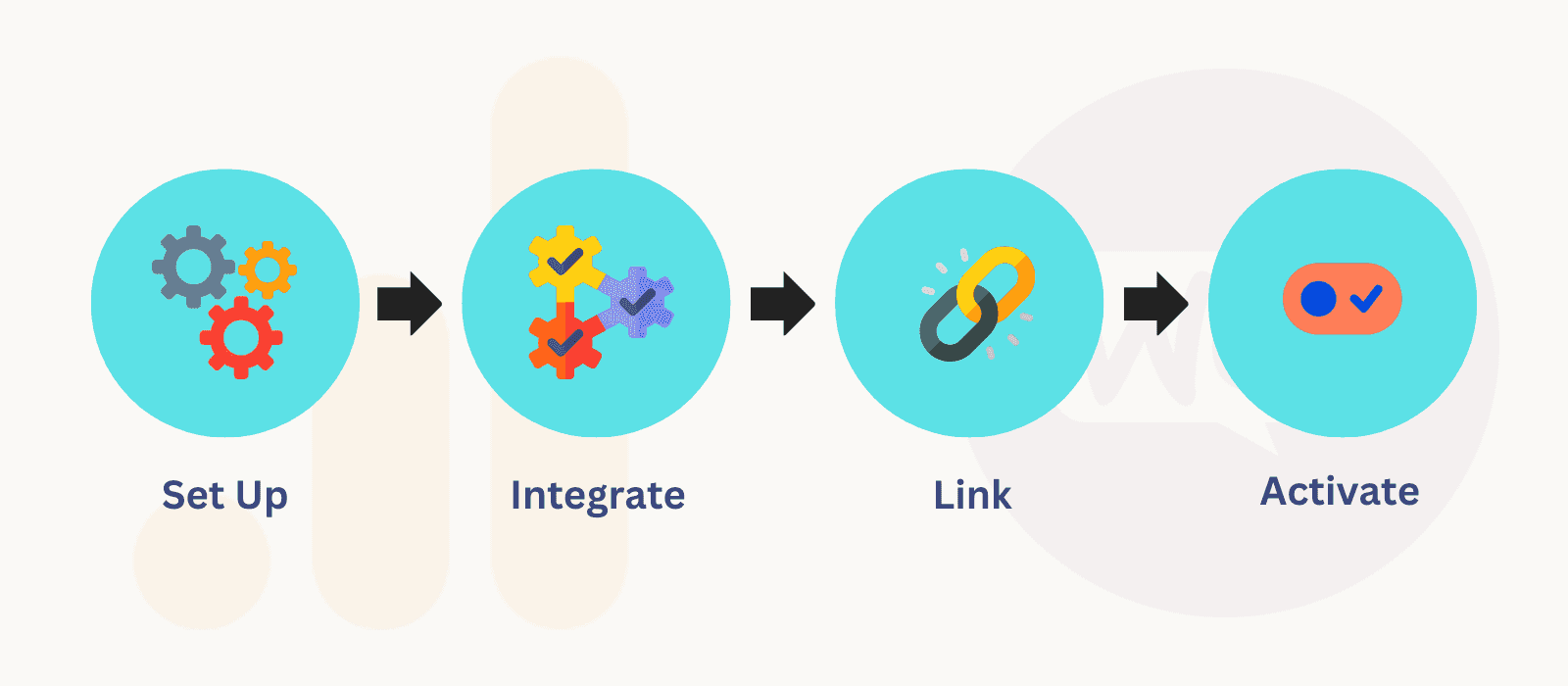
Step-by-step guide to integrating Google Analytics with WooCommerce
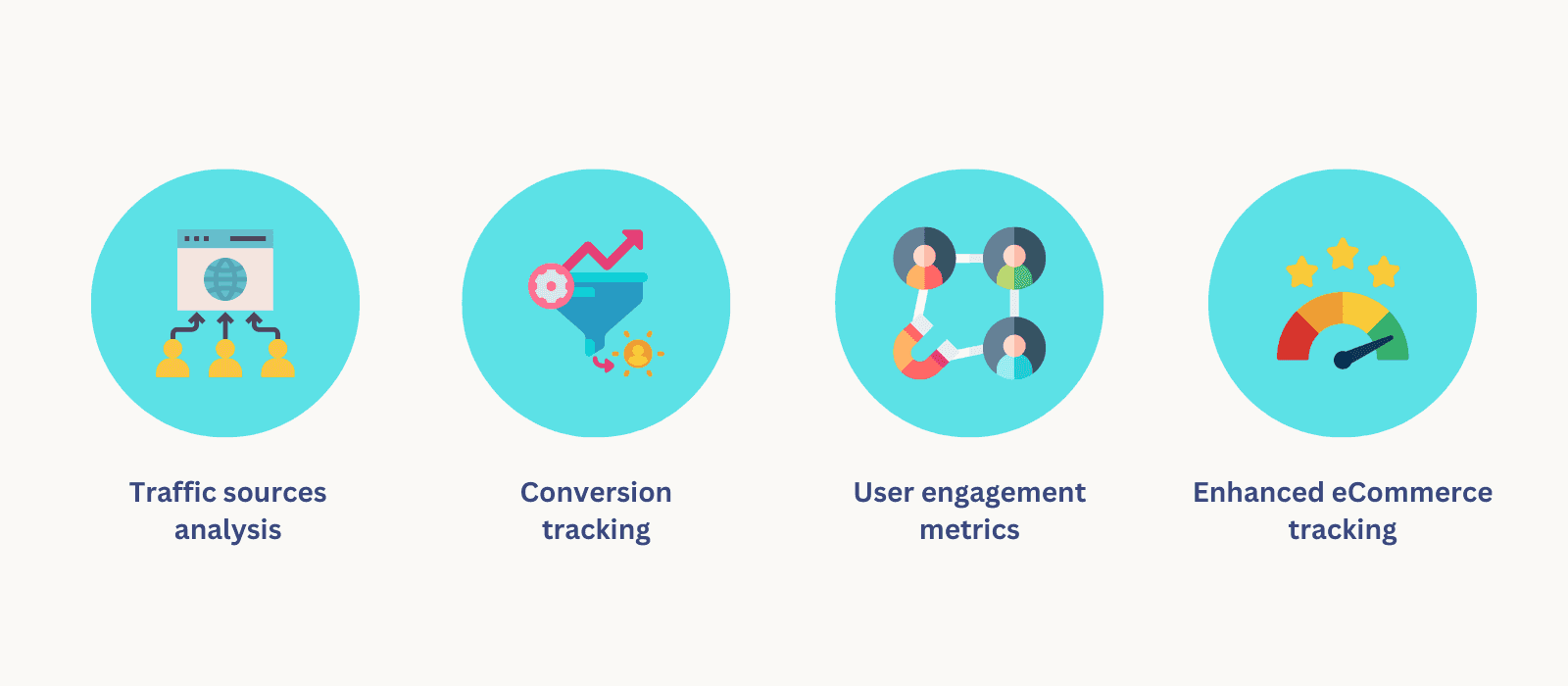
Set Up Your Google Analytics Account: If you haven't started with Google Analytics yet, begin by signing up on their website. It's free and easy to use.
Integrate the Google Analytics Plugin: Inside your WordPress dashboard, go to "Plugins," then "Add New." Search for "Google Analytics," choose a fitting plugin like "MonsterInsights" or "Enhanced Ecommerce Google Analytics Plugin," and activate it.
Link Your WooCommerce Store: After installing the plugin, access its settings in your WordPress dashboard. You can link your WooCommerce store by inputting your Google Analytics tracking ID or authentication code.
Activate Enhanced eCommerce Tracking: For advanced tracking in Google Analytics, enable enhanced eCommerce tracking in the plugin settings. This feature offers deep insights into product performance and shopper behavior. Leveraging advanced tracking features for comprehensive data analysis
By integrating Google Analytics with WooCommerce effectively, you unlock advanced tracking features that can help you understand user behavior, monitor traffic sources, measure conversions accurately, and evaluate user engagement metrics. Here are some key benefits:
Traffic sources analysis: Gain insights into where your website visitors are coming from - organic search results, social media platforms, paid advertisements, or other channels. This information allows you to focus marketing efforts on the most effective sources.
Conversion tracking: Measure the success of your marketing campaigns and track conversions by setting up goals in Google Analytics. You can monitor how many visitors complete desired actions, such as purchasing or signing up for a newsletter.
User engagement metrics: Analyse user behavior on your WooCommerce store by examining metrics like bounce rate, time spent on site, and page views per session. This data helps you identify areas where users may be dropping off or experiencing difficulties.
Enhanced eCommerce tracking: With enhanced eCommerce tracking enabled, you can delve deeper into product performance, including revenue generated, average order value, and shopping cart abandonment rates. This information empowers you to optimize your product offerings and improve conversion rates.
How to Run Analytics for a WooCommerce Store

Setting up goals and conversion tracking in Google Analytics
To proficiently conduct analytics for your WooCommerce store, it's paramount to establish goals and enable conversion tracking within Google Analytics. This practice imparts invaluable perceptions into your online store's performance, empowering you to formulate data-based decisions.
Configuring goals facilitates tracking precise actions pivotal to your business, such as finalized purchases or subscriptions to newsletters. By delineating these objectives, you can quantify their conversion rates and pinpoint avenues for refinement. To accomplish this:
Access your Google Analytics account and go to the Admin section.
Click "Goals" under the View column, then choose "New Goal."
Select a template or craft a custom goal that suits your objective.
Input goal specifics like name, type, and value.
Define conditions marking goal completion, like reaching a certain URL or spending time on a page.
Save your goal settings.
Once you set goals, you must enable conversion tracking so that Google Analytics can accurately measure conversions on your WooCommerce store. This involves adding tracking codes to relevant pages:
For completed purchases: Place the tracking code snippet on the order confirmation page.
For newsletter sign-ups: Add the tracking code snippet to the thank-you page after submission.
Analysing sales funnels and customer journeys
Analyzing sales funnels and customer journeys is another critical aspect of running analytics for your WooCommerce store. This helps you understand how visitors navigate your website, where they drop off in purchasing, and how different marketing channels contribute to conversions.
By examining sales funnels, you can identify potential bottlenecks or areas where customers abandon their carts before completing a purchase. This information enables you to optimize those stages of the funnel and improve conversion rates. Here's how you can analyze sales funnels in Google Analytics:
Go to the Conversions section in Google Analytics.
Click on "Goals" and then select "Funnel Visualisation."
Select the goal you want to analyze and view the funnel visualization report.
Identify any significant drop-off points or stages with low conversion rates.
Optimize those stages, such as improving website usability, simplifying checkout processes, or offering incentives.
Understanding customer journeys involves analyzing how visitors interact with your store across multiple touchpoints before converting. This helps you identify which marketing channels are most effective at driving conversions and allows for targeted optimization efforts.
Utilising segmentation to understand different customer groups
Effective segmentation is vital for conducting analytics on your WooCommerce store, enabling you to extract valuable insights from diverse customer clusters and customize your marketing tactics accordingly. By categorizing your audience according to demographics, behavior, or purchase patterns, you can grasp their preferences and tailor campaigns and promotions to each group, ultimately boosting conversion rates.
In Google Analytics, you can create custom segments by defining specific criteria that categorize visitors into distinct groups:
Demographic segmentation: Segment customers based on age, gender, location, or language preferences.
Behavioral segmentation: Group customers based on their browsing behavior
Analysing Ecommerce Conversion Reports in WooCommerce
![Analysing Ecommerce Conversion Reports in WooCommerce.png]()
Interpreting conversion rate metrics such as add-to-cart, checkout, and purchase rates
Analyzing conversion rate metrics is vital, offering insights into your online store's performance and areas for enhancement.
An essential metric is the add-to-cart rate, indicating the percentage of visitors who add items. A high rate reflects engaging product pages, while a low one may point to issues in descriptions or images.
Monitoring the checkout rate is crucial, too. It reveals the percentage of visitors proceeding from cart to checkout. A drop might signal checkout friction like complex forms or unexpected costs.
Lastly, the purchase rate shows the percentage of visitors successfully finishing a purchase. A low rate requires investigating barriers that hinder transactions.
Evaluating product performance through revenue reports and average order value analysis
To gain deeper insights into your eCommerce performance, WooCommerce provides revenue reports and average order value analysis. These tools allow you to evaluate how well individual products sell and make data-driven decisions to optimize your product offerings.
The revenue report provides a comprehensive overview of your sales over a specific period. It helps you identify top-performing products that contribute significantly to your overall revenue. Understanding which products generate the most sales allows you to allocate resources effectively and prioritize marketing efforts accordingly.
Analyzing average order value lets you understand customer spending patterns on your website. This metric reveals the average amount customers spend per order. By identifying products that are commonly purchased together, you can implement cross-selling or upselling strategies to increase the average order value.
Identifying cart abandonment issues and implementing solutions
Cart abandonment is a common challenge for eCommerce websites, but with WooCommerce analytics, you can effectively identify and address this issue. Cart abandonment occurs when visitors add items to their carts but leave the website without completing the purchase.
WooCommerce provides detailed reports on abandoned carts, allowing you to pinpoint potential problems in your sales funnel. You can analyze these reports to understand why customers abandon their carts and take appropriate action to improve conversion rates.
Some possible reasons for cart abandonment include unexpected shipping costs, complicated checkout processes, or a lack of trust in your website's security. You can reduce cart abandonment rates and increase conversions by addressing these issues, such as offering free shipping promotions or streamlining the checkout process.
Creating a Dashboard for WooCommerce Customer Analytics
Tailoring Google Analytics dashboards allows you to zero in on customer metrics and glean valuable insights from your WooCommerce analytics. You can make informed choices that amplify your online store's performance by monitoring customer acquisition channels, lifetime value, and retention rates.
To personalize your WooCommerce analytics dashboard on Google Analytics, follow these steps:
Log in to your Google Analytics account and head to the Admin section.
Pick the View where you wish to establish the dashboard.
Within the Customization menu, select "Dashboards" and then "Create."
Opt for a Blank Canvas or Starter Dashboard template, depending on your preference.
Once you have set up the basic structure of your dashboard, it's time to add widgets that display relevant data for customer analysis. Here are some essential widgets you should consider including:
Widget 1: Customer Acquisition Channels
This widget provides an overview of the channels customers find your online store. It helps you understand which marketing efforts are driving traffic and conversions. Use a pie chart or bar graph to visualize the percentage of customers coming from organic search, paid advertising, social media, email marketing, etc.
Widget 2: Lifetime Value
Tracking customer lifetime value is crucial for understanding how much revenue each customer generates over their entire relationship with your business. Display this information using a line graph or table that shows changes in average lifetime value over time.
Widget 3: Retention Rates
Monitor customer retention rates by displaying a line graph illustrating how many customers continue purchasing from your store over specific periods (e.g., monthly or quarterly). This helps identify trends and measure the effectiveness of retention strategies.
Widget 4: Key Performance Indicators (KPIs)
Using charts or tables, visualize important KPIs such as conversion rate, average order value, and total revenue. This gives you a quick overview of your store's performance and allows you to identify areas that need improvement.
When customizing these widgets, take advantage of the various options in the customization menu. You can select different date ranges, compare data sets, and choose how the information is displayed.
Regularly review and update your dashboard based on evolving business needs and goals. Experiment with visualizations and metrics to find what works best for your WooCommerce analytics.
Key Takeaways from WooCommerce Analytics
Incorporating analytics into your WooCommerce store offers invaluable insights, empowering data-backed choices for business enhancement. By comprehending customer behavior, monitoring conversions, and tracking SEO performance, you can pinpoint areas to refine and take precise measures to amplify online sales. Seamlessly integrating Google Analytics with WooCommerce grants access to a wealth of customizable data and reports tailored to your objectives. With these tools, you can scrutinize eCommerce conversion reports, create customer analytics dashboards, and secure a competitive edge in the bustling online marketplace.
Don't overlook the chance to elevate your WooCommerce store with analytics! Begin by applying the strategies discussed here and witness their transformative impact on your business. Remember, knowledge equals power. Through analytics, you'll gain a profound understanding of your customers, optimize marketing endeavors, and ultimately bolster sales.

Article by:
Archit
Content Manager
Archit has been working with WPWeb Infotech since 2015 as a Content Manager. He is a passionate content writer and has a love for WordPress and Digital Marketing so he spends a significant amount of time writing about it.
